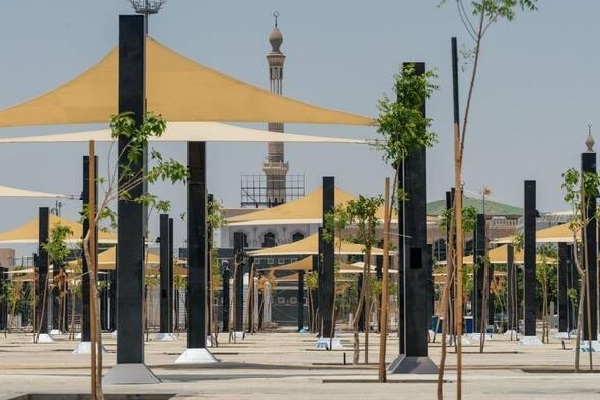Shading, Cooling Project Launched at Namira Mosque to Support Pilgrims During Hajj

This seasonal project is designed to alleviate the extreme heat commonly experienced during the annual Hajj pilgrimage, according to the Saudi Press Agency.
With temperatures in the region often soaring, the efforts seek to improve comfort and ease the movement of worshippers during one of the most significant Islamic rituals.
Read More:
Covering an area of 85,000 square meters around Namira Mosque, the development includes the planting of 2,000 trees in the eastern courtyards, the installation of complete water and electricity infrastructure, the construction of 320 shade canopies, and the deployment of 350 misting fans.
In addition, broader environmental efforts have been undertaken beyond the immediate mosque vicinity. As part of the Green Holy Sites initiative—aligned with the broader Saudi Green Initiative—the company reports the planting of 20,000 trees over an area spanning 290,000 square meters. The initiative aims to increase green coverage and promote sustainability within the Kingdom’s religious and urban environments.
Watch:
Namira Mosque holds particular religious and historical importance in Islam. Located in the plain of Arafat, it is a focal point during the second day of Hajj, when millions of Muslims gather for the pivotal rite known as Wuquf (standing at Arafat), a central element of the pilgrimage. Hajj itself must be undertaken at least once in a lifetime by Muslims who are physically and financially able.
Source: Agencies



